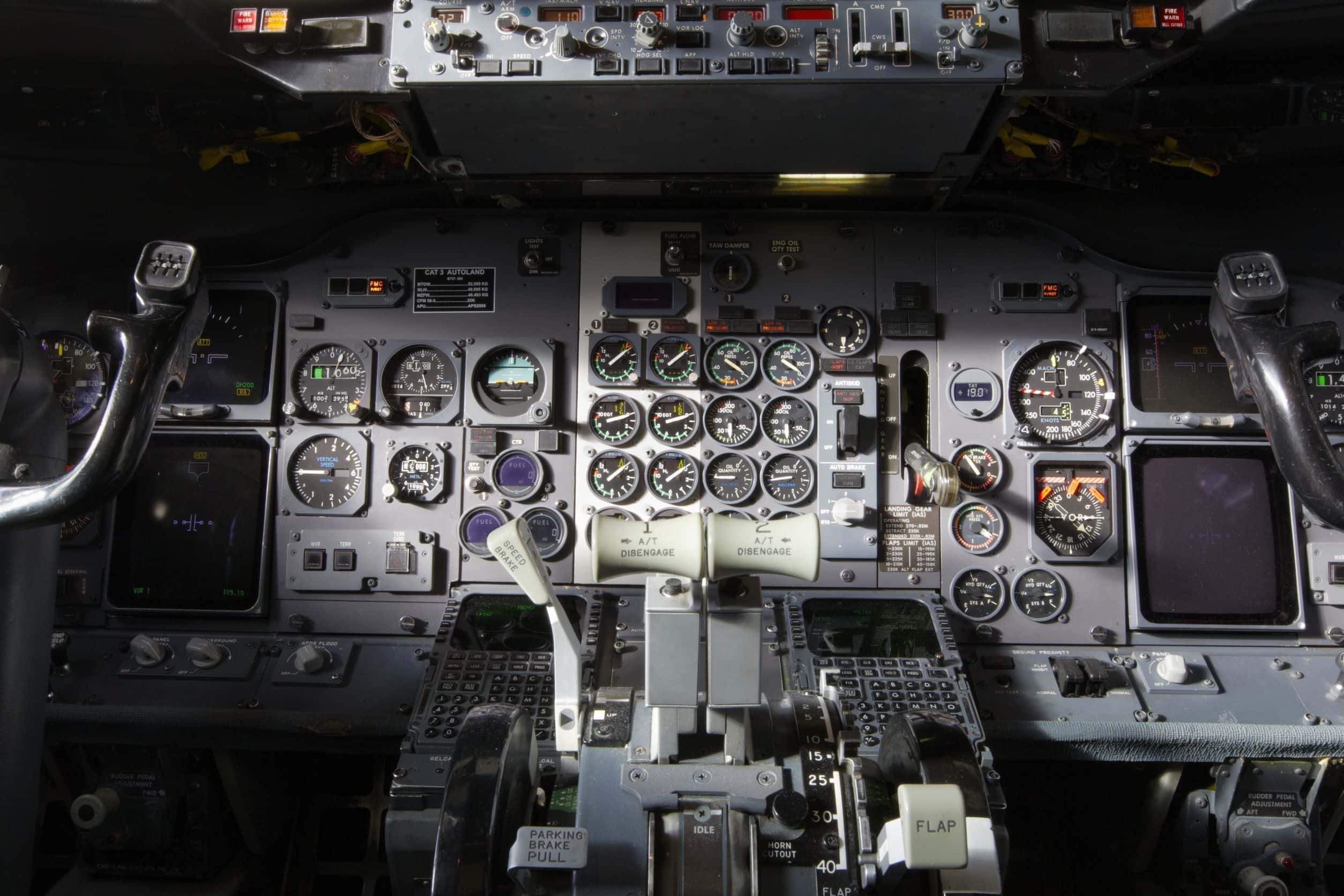Family Claims Control Panel Design Caused Fatal Plane Crash
Updated on
Plaintiffs are survivors of a man killed when a plane he owned and was piloting crashed in Utah, where he was working on an aerial photography project. His family alleges that the plane’s flight display was defective and unreasonably dangerous because a defect disrupted the circuit board, causing the artificial horizon on the display to spontaneously display inaccurate and misleading information, including inaccurate and misleading roll and pitch information. This misinformation caused the crash.
The family filed a wrongful death, negligence and products liability case against the plane’s manufacturer and the designer of flight instrument system and flight display. They seek $10 million, plus punitive damages, claiming that aviation manufacturing regulations were violated. Through the course of the litigation, numerous documents have been discovered. A motion to intervene for the sole purposes of obtaining unredacted copies of the summary judgment record was filed. The defendant opposed it, claiming the record contained trade secrets or was protectable as proprietary.
Question(s) For Expert Witness
1.) Do the requested documents contain trade secrets?
2.) Was the defendant aware of potential defects in the display?
Expert Witness Response
 The defendant is no longer producing the primary flight display at issue. I have personally disassembled an exemplar display, and I know that its hardware is supplied by multiple commercial vendors such that the device can be easily “reverse engineered.” There is nothing about the display in terms of its hardware or software that is patentable. The defendant has 15 patents assigned to it by the U.S. Patent and Trademark Office, most of which pertain to the displaying of lightning and weather. None of these patents contain any processes, hardware, software, or any other trade secrets or improvements relative to the displaying of airspeed, altitude, attitude, or rate information that pilots need for “situational awareness” in order to conduct safe and controlled flight. Review of these patents will document that there is nothing in the hardware or software at the core of the display that is patentable or, alternatively, that the defendant has chosen not to employ proprietary protection from the USPTO for this device. Further, none of the depositions requested contain information that would be patentable or could assist the defendant’s competitors in any technical way.
The defendant is no longer producing the primary flight display at issue. I have personally disassembled an exemplar display, and I know that its hardware is supplied by multiple commercial vendors such that the device can be easily “reverse engineered.” There is nothing about the display in terms of its hardware or software that is patentable. The defendant has 15 patents assigned to it by the U.S. Patent and Trademark Office, most of which pertain to the displaying of lightning and weather. None of these patents contain any processes, hardware, software, or any other trade secrets or improvements relative to the displaying of airspeed, altitude, attitude, or rate information that pilots need for “situational awareness” in order to conduct safe and controlled flight. Review of these patents will document that there is nothing in the hardware or software at the core of the display that is patentable or, alternatively, that the defendant has chosen not to employ proprietary protection from the USPTO for this device. Further, none of the depositions requested contain information that would be patentable or could assist the defendant’s competitors in any technical way.
 Regarding the defect, almost immediately after the introduction of the display, the defendant began receiving reports from the field of multiple failures, defects, and malfunctions of this equipment. The National Transportation Safety Board obtained data from four aircraft manufacturers regarding the display system anomalies. Approximately 1,800 entries were provided for the time period. Review of the information revealed that in many cases the system would exhibit anomalous operation immediately after installation. Multiple types of in-service anomalies were recorded from a low of 6 hours of operation to a high of 1,026.4 hours of operation. These anomalies included, but were not limited to, alignment failures, air data errors, display errors, problems with software, in-flight failure of the units, horizontal lines being displayed, magnetometers not communicating, pitch errors, command bar errors, ADAHRS failures, blanking out, flickering, erratic displays, miscompare messages, X outs, sound or smoke, and erratic knob operation.
Regarding the defect, almost immediately after the introduction of the display, the defendant began receiving reports from the field of multiple failures, defects, and malfunctions of this equipment. The National Transportation Safety Board obtained data from four aircraft manufacturers regarding the display system anomalies. Approximately 1,800 entries were provided for the time period. Review of the information revealed that in many cases the system would exhibit anomalous operation immediately after installation. Multiple types of in-service anomalies were recorded from a low of 6 hours of operation to a high of 1,026.4 hours of operation. These anomalies included, but were not limited to, alignment failures, air data errors, display errors, problems with software, in-flight failure of the units, horizontal lines being displayed, magnetometers not communicating, pitch errors, command bar errors, ADAHRS failures, blanking out, flickering, erratic displays, miscompare messages, X outs, sound or smoke, and erratic knob operation.
 Defendant was made aware of ongoing, systematic failures, defects, and malfunctions occurring during flight and which involved either the equipment's hardware, software, or both. The company began receiving warranty claims almost immediately after shipments of this equipment began.
Defendant was made aware of ongoing, systematic failures, defects, and malfunctions occurring during flight and which involved either the equipment's hardware, software, or both. The company began receiving warranty claims almost immediately after shipments of this equipment began.
 The expert is an expert in avionics, aircraft electrical systems, aircraft electrical distribution, avionics integration, trim systems, global positioning systems, cockpit voice recordings, flight data recorders, and traffic collision avoidance systems. He holds numerous patents in electronics, robotics, avionics and others and has investigated multiple aircraft crashes over the last several years focusing on forensic electronic and electrical distribution problems.
The expert is an expert in avionics, aircraft electrical systems, aircraft electrical distribution, avionics integration, trim systems, global positioning systems, cockpit voice recordings, flight data recorders, and traffic collision avoidance systems. He holds numerous patents in electronics, robotics, avionics and others and has investigated multiple aircraft crashes over the last several years focusing on forensic electronic and electrical distribution problems.
About the author
Kristin Casler
Kristin Casler is a seasoned legal writer and journalist with an extensive background in litigation news coverage. For 17 years, she served as the editor for LexisNexis Mealey’s litigation news monitor, a role that positioned her at the forefront of reporting on pivotal legal developments. Her expertise includes covering cases related to the Supreme Court's expert admissibility ruling in Daubert v. Merrell Dow Pharmaceuticals Inc., a critical area in both civil and criminal litigation concerning the challenges of 'junk science' testimony.
Kristin's work primarily involves reporting on a diverse range of legal subjects, with particular emphasis on cases in asbestos litigation, insurance, personal injury, antitrust, mortgage lending, and testimony issues in conviction cases. Her contributions as a journalist have been instrumental in providing in-depth, informed analysis on the evolving landscape of these complex legal areas. Her ability to dissect and communicate intricate legal proceedings and rulings makes her a valuable resource in the legal journalism field.
Subscribe to our newsletter
Join our newsletter to stay up to date on legal news, insights and product updates from Expert Institute.
Sign up nowFind an expert witness near you
What State is your case in?
Subscribe to our newsletter
Join our newsletter to stay up to date on legal news, insights and product updates from Expert Institute.



